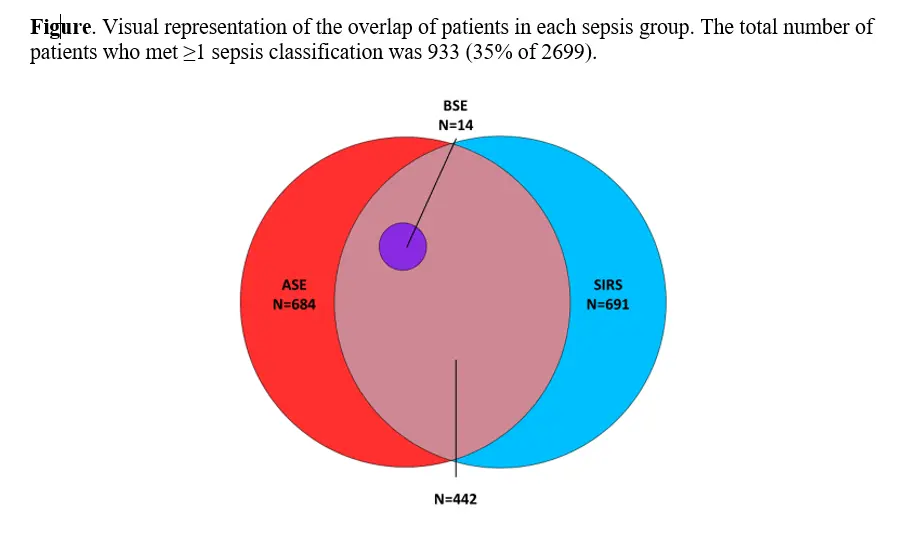Evaluation of Sepsis Classification Among Wounded Military Personnel
Author(s):
Sara Robinson; Erica Sercy; Faraz Shaikh; Laveta Stewart; Wesley Campbell; Catherine Decker; Joseph Yabes; Dana Blyth; David Tribble
Background:
Infections are common following combat trauma (~30% of casualties).
Hypothesis:
As new sepsis criteria have been developed, we examined the epidemiology following battlefield trauma using different sepsis classifications.
Methods:
Military personnel injured during deployment (2009-14) who were medevac’d to Landstuhl Regional Medical Center (Germany) and transitioned to US military hospitals were assessed using systemic inflammatory response syndrome (SIRS) and CDC Sepsis Toolkit criteria for Adult Septic Event (ASE) or Bacteremia/Fungemia Shock Event (BSE). Patients meeting ASE and SIRS criteria were included in both groups. All BSE patients met ASE criteria by default but were kept mutually exclusive in the analysis.
Results:
Among 2699 patients, 691 (26%), 684 (25%), and 14 (0.5%) met SIRS, ASE and BSE criteria, respectively, with an incidence density (95% CI) of 8.61 (7.99-9.27), 8.52 (7.90-9.18), and 0.17 (0.09-0.29) per 1000 inpatient days. Overall population, injury severity score ≥26 in 38%; whereas it was 74-86% for those who met sepsis criteria. There was substantial overlap between SIRS and ASE (64%; Figure). Median observation time for SIRS patients was 45 (IQR 31-65) days, 39 (IQR 23-60) days for ASE, and 89 (IQR 41-145) days for BSE. Nearly all SIRS patients (98%) had ≥1 coincident infection versus ASE (61%) and BSE (74%) with 8%, 10% and 26% having ≥3 coincident infections, respectively. For SIRS, ASE and BSE, soft-tissue infections (54%, 28% and 16% respectively) and pneumonia (23%, 29% and 16%) were often associated with septic events. Undifferentiated sepsis (37%) and intraabdominal infections (10.5%) often coincided with BSE versus SIRS (10% and 4%) and ASE (7% and 2%). Hospitalization was a median of 45, 39, and 89 days and crude mortality was 2%, 1% and 21% for SIRS, ASE and BSE groups, respectively.

Conclusions:
Sepsis following major combat trauma occurs in ~35% of casualties depending on classification. SIRS and ASE criteria capture patients with similar risk factors and outcomes. BSE is a stringent sepsis definition uncommon in this population, and those patients had long hospitalizations, multiple coincident infections, and high mortality.
